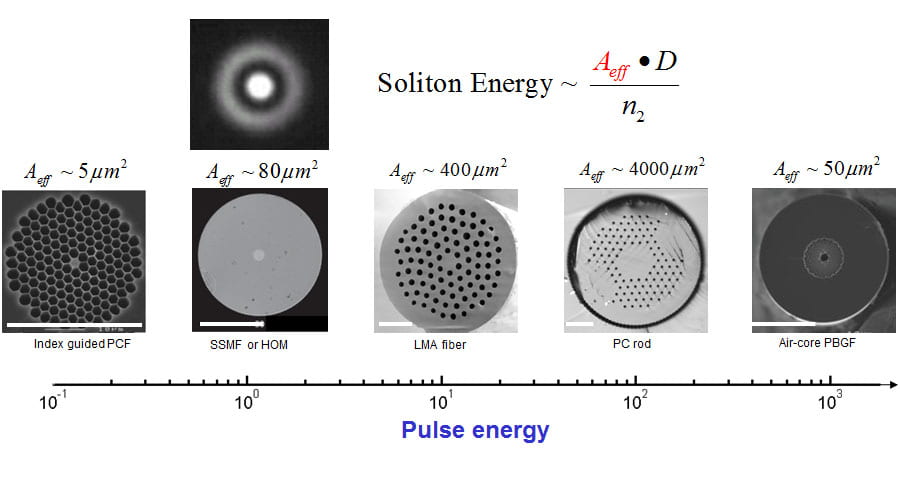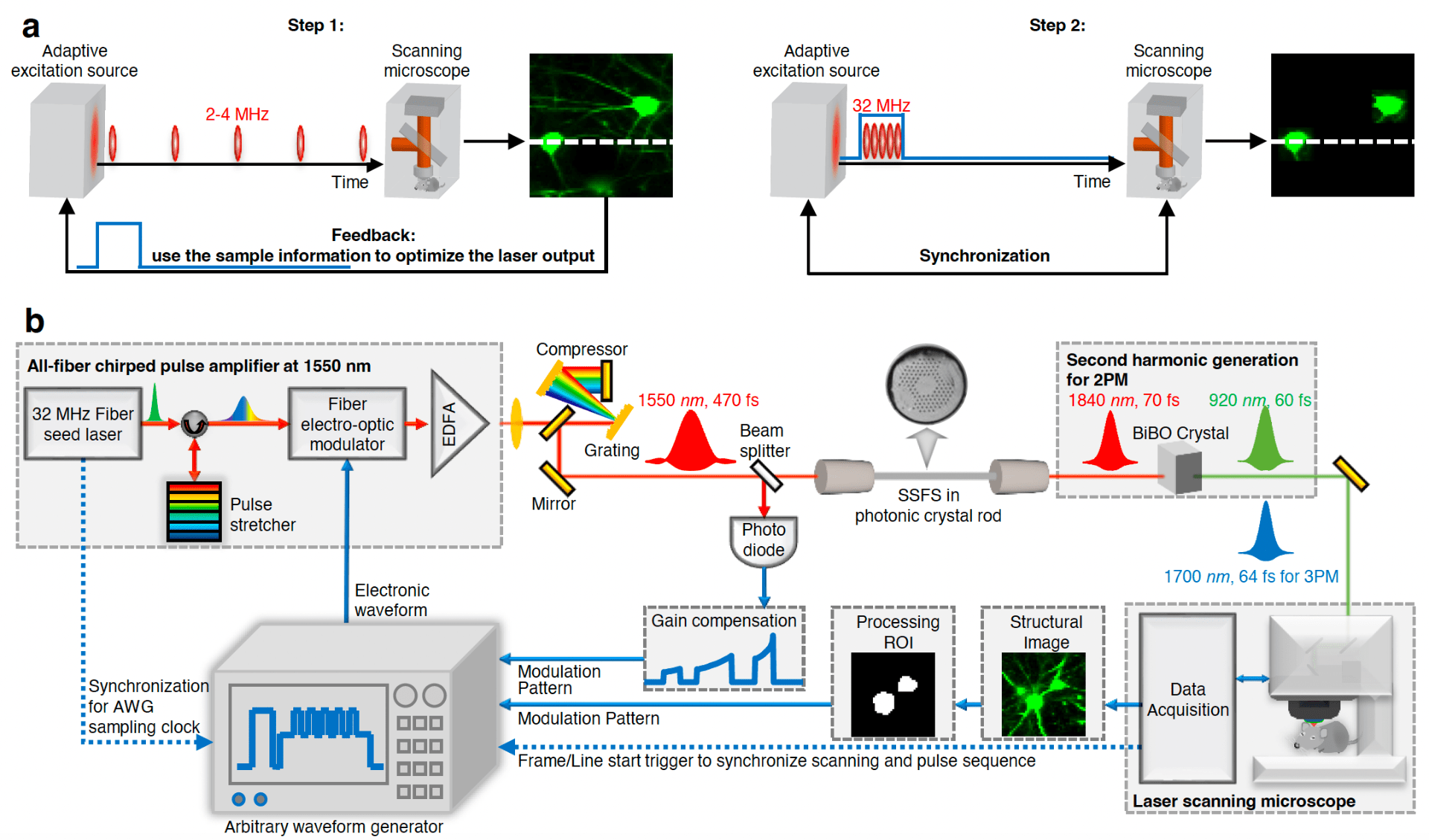Biomedical Imaging
Deep Imaging in Scattering Biological Tissue
Laser scanning multiphoton microscopy (MPM) has greatly improved the penetration depth of optical imaging and is proven to be well suited for a variety of imaging applications deep within intact or semi-intact tissues. Nonetheless, MPM has so far been restricted to ~ 1 mm in depth in brain tissues, which is only about a quarter of the ~ 4 mm cortex thickness of human. We are currently developing novel ultrafast lasers and fiber optics, adaptive optics, and computation and machine learning tools for imaging deep and fast into scattering biological specimens.
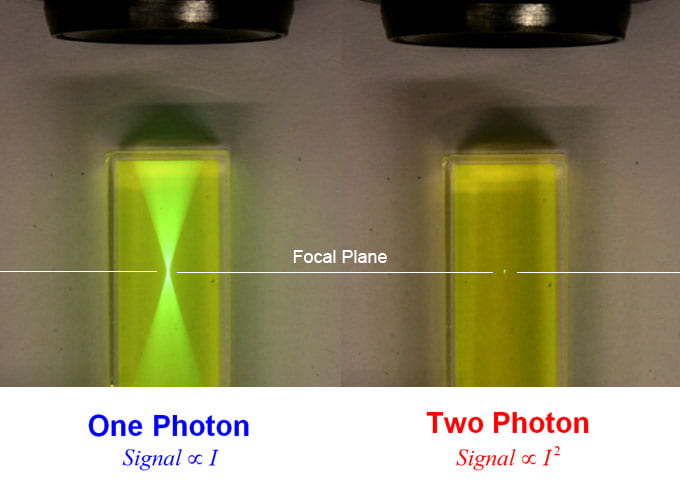
A comparison of point spread functions (PSFs) of one-photon and two-photon fluorescence microscopy. Both cuvettes contain fluorescein solution. The inherent 3D localized excitation and the longer excitation wavelength are the main advantages of multiphoton microscopy for imaging deep into scattering tissue. See our review paper in Optica
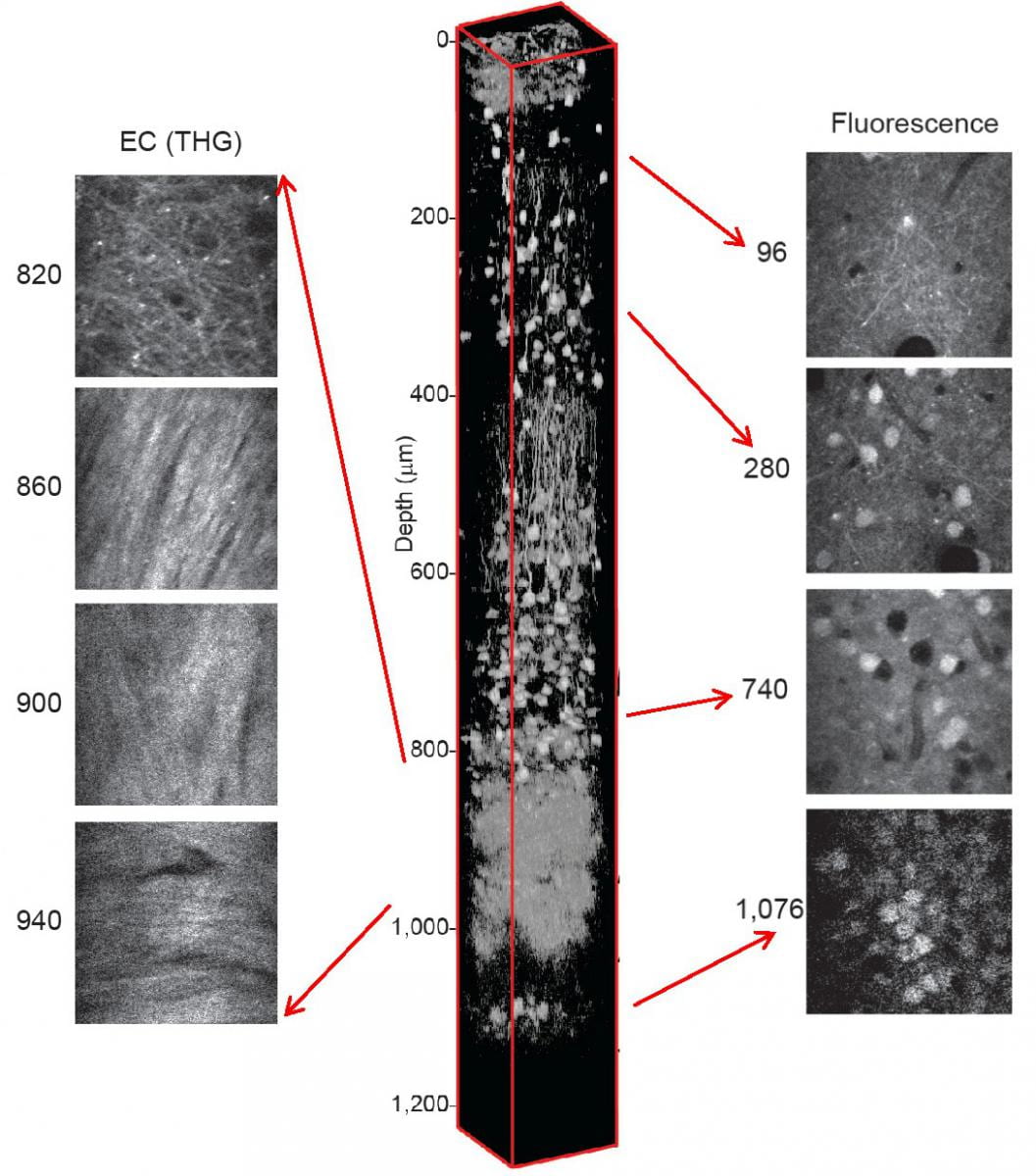
In vivo three-photon fluorescence microscopy beyond the white matter (EC) of an intact mouse brain. Center: 3D reconstruction of RFP labeled neurons. Left: x-y images of third harmonic generation (THG) within the EC. Right: x-y images of RFP fluorescence at various depths. Nature Photonics Article
Multiphoton Endoscopy
Optical endoscopes have played a major role in medical diagnostic and minimally invasive surgery by making it possible to visualize tissue at remote internal sites. In our current research, we are exploring new concepts and devices that would significantly improve the performance of existing medical endoscopes, both rigid and flexible. Our goal is to create multiphoton endoscopes for non-invasive real-time diagnostics via ‘optical biopsies’ without any exogenous contrast, providing guidance for biopsy devices for more accurate sampling, and assessing surgical margins following tumor resection.
Prototype Multiphoton Endomicroscope publication
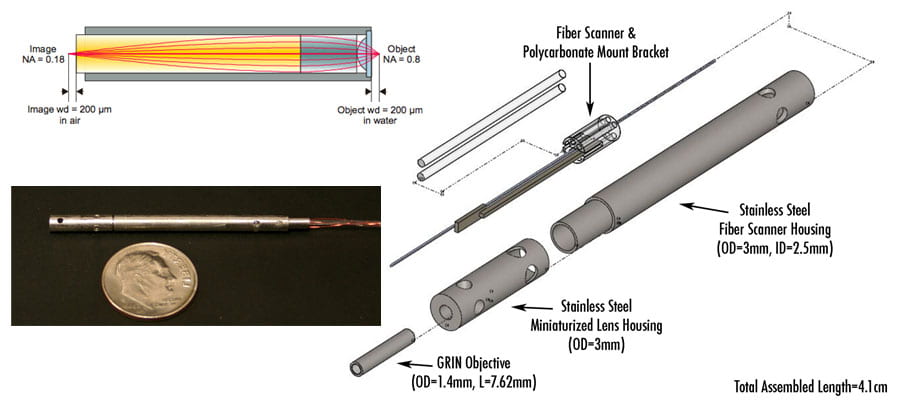
Endomicroscope Images publication images
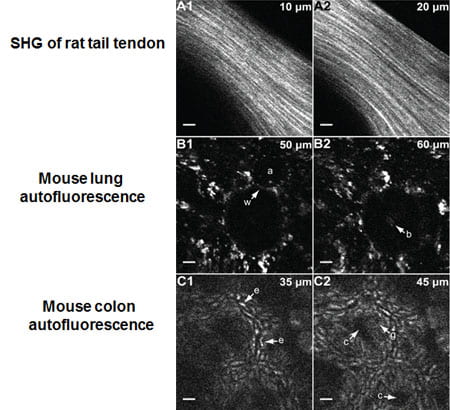
Fiber Optics
We are developing novel optical fibers to generate energetic pulses for multiphoton deep tissue imaging and coherent Raman scattering imaging. We are also developing novel optical fiber based devices to support our medical multiphoton endoscope effort so that high performance imaging can be achieved in a miniature endoscope. See our laser source development paper https://www.nature.com/articles/s41592-019-0663-9
Soliton Pulse Energy Scaling in Optical Fibers
